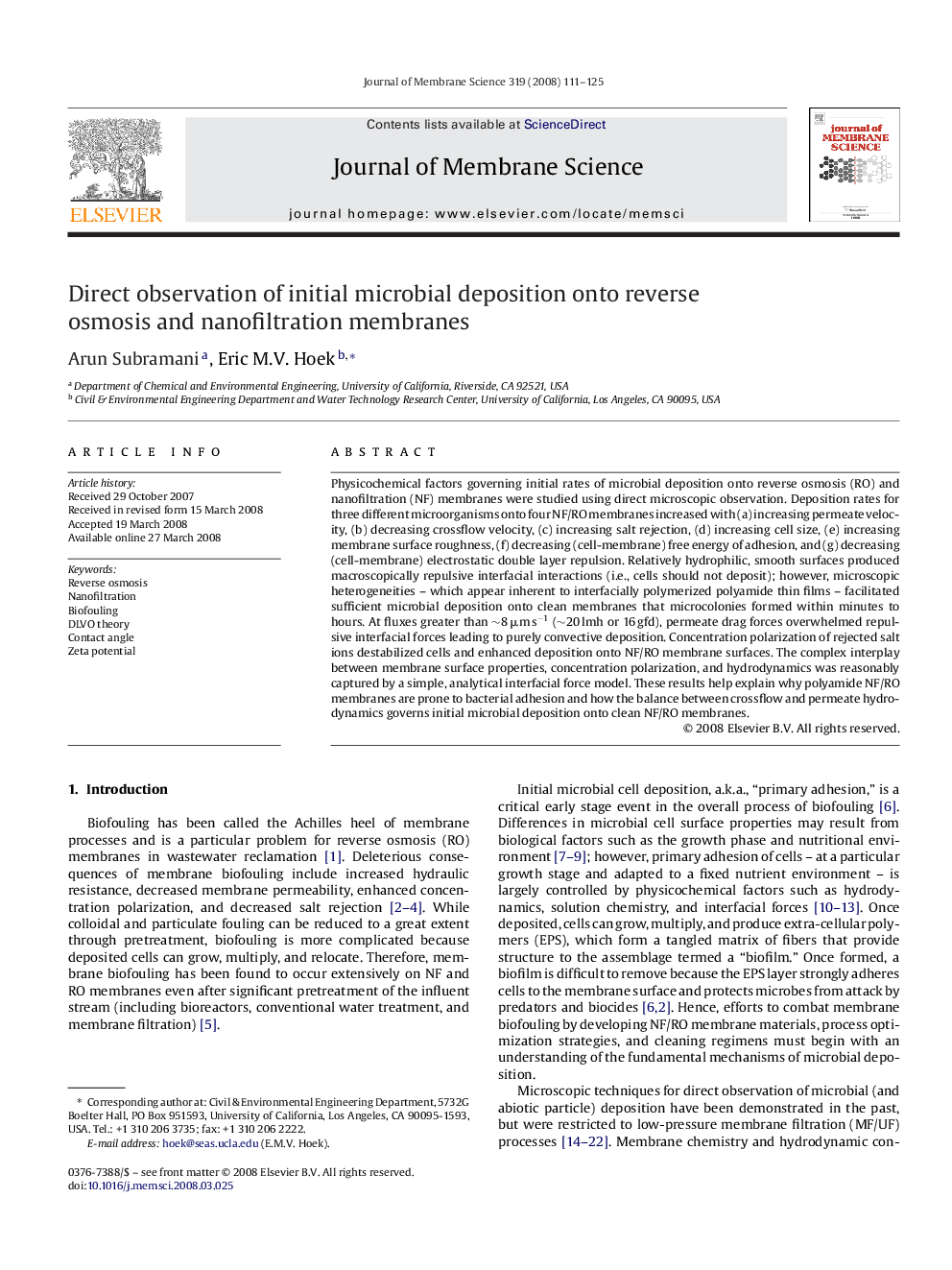| Article ID | Journal | Published Year | Pages | File Type |
|---|---|---|---|---|
| 637852 | Journal of Membrane Science | 2008 | 15 Pages |
Physicochemical factors governing initial rates of microbial deposition onto reverse osmosis (RO) and nanofiltration (NF) membranes were studied using direct microscopic observation. Deposition rates for three different microorganisms onto four NF/RO membranes increased with (a) increasing permeate velocity, (b) decreasing crossflow velocity, (c) increasing salt rejection, (d) increasing cell size, (e) increasing membrane surface roughness, (f) decreasing (cell-membrane) free energy of adhesion, and (g) decreasing (cell-membrane) electrostatic double layer repulsion. Relatively hydrophilic, smooth surfaces produced macroscopically repulsive interfacial interactions (i.e., cells should not deposit); however, microscopic heterogeneities – which appear inherent to interfacially polymerized polyamide thin films – facilitated sufficient microbial deposition onto clean membranes that microcolonies formed within minutes to hours. At fluxes greater than ∼8 μm s−1 (∼20 lmh or 16 gfd), permeate drag forces overwhelmed repulsive interfacial forces leading to purely convective deposition. Concentration polarization of rejected salt ions destabilized cells and enhanced deposition onto NF/RO membrane surfaces. The complex interplay between membrane surface properties, concentration polarization, and hydrodynamics was reasonably captured by a simple, analytical interfacial force model. These results help explain why polyamide NF/RO membranes are prone to bacterial adhesion and how the balance between crossflow and permeate hydrodynamics governs initial microbial deposition onto clean NF/RO membranes.
